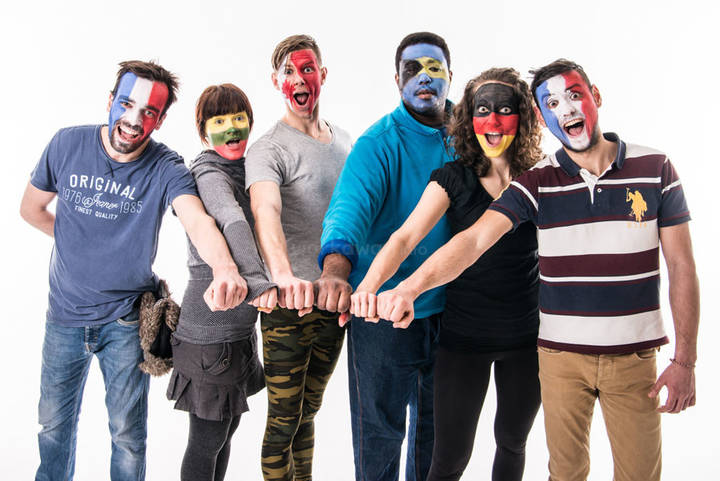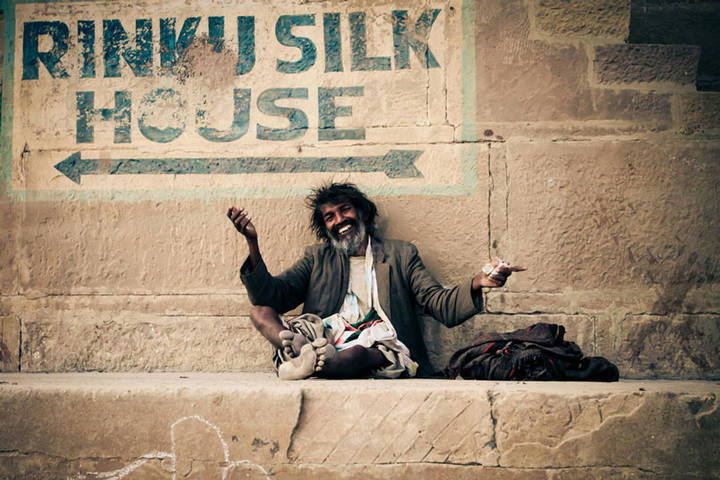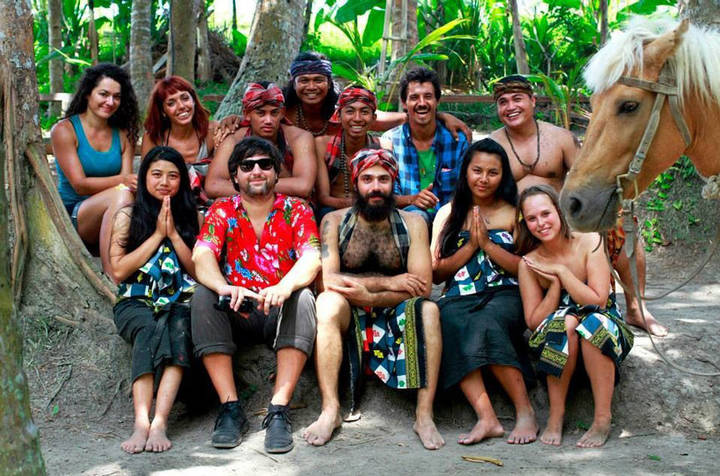Tips for Travelling Like a Local and Blending In
Whether you like it or not, as a newcomer in a place you will be recognised as such sooner or later, mostly by your appearance, but also by your manner and of course as soon as you open your mouth to speak.
If you’re in a big city where there is a cultural mix it may be easier to blend in like a local up to a point, but in popular tourist destinations experienced eyes whose business it is to scan and assess prospective custom, you don’t stand a chance of travelling incognito!
I know of stall holders in Fez market who with one quick glance can make a very close guestimate not only your age and nationality, but also what goods you’d be most interested in and your spending power. This knowledge is essential to their economic survival and success, and so of course they are experts at this game!
In more remote locations your arrival will be noticed as well as all the little details in the way you dress and your mannerisms which make you appear different.

Once you accept that there is no way that you can hide your identity as a visitor, the question is how you want to appear in that role. Do you want to stick out like a sore thumb? Or do you want to give the impression that you are a seasoned traveller who is versatile and clued up?
It’s often something which is overlooked, but both your appearance and your manner say a great deal, and in countries with a different culture and language to our own this is even more significant. Here are some considerations to point you in the right direction to blending in with the locals whilst you travel:
CLOTHES – Know the norm:
Biggest myth #1: The hotter the country the less clothes you wear:
Louis arrived in the Carribbean crewing on a yacht. He had never known such heat, and so on the scale of heat versus what to wear, he decided to put on his speedos (swimming trunks). The skipper drove him into town to look around and stock up on supplies. The skipper made no comment, but dropped him off in one of the main streets. A funeral procession went by and the fully clad sombre crowd passed with sideways glances and shaking with uncontrollable sniggers as they saw a very confused almost naked man standing at the side of the road. In some parts of the world he may well have been arrested for indecent exposure. An extreme example, but even in the hottest countries of the world t-shirts and jeans are not worn by the local community and are considered to be offensive.
 and at least respect the length of sleeves or skirts/trousers, whether heads tend to be covered.
and at least respect the length of sleeves or skirts/trousers, whether heads tend to be covered.
Colours can be significant too depending upon the culture. All black can be interpreted as being in mourning, but then in India brides wear red and mourners wear all white. There is a tendency in hotter climates to wear brighter colours, and darker or more subtle shades in Northern climates. In some parts of the world the colours worn are influenced by gender too. Fluorescent clothes are not a good choice if you want to blend in, unless you’re at an 1980’s themed surf camp.
Biggest myth #2: Wear local traditional dress and you can’t go wrong:
Hmmm. An image springs to mind of two Europeans who had recently arrived in Morocco wearing Jalabas and fezzes and feeling very much the part. In front of them were two wads of money as a down payment for a house they’d seen and two gin and tonics. There is something very wrong here!
Equally shocking were the couple spotted by a Workawayer in Vietnam, both of whom were proudly sporting the US flag: he had it splashed across his vest top and she had it sequinned across the seat of her hotpants! Either very unaware of the US history in Vietnam, or just being controversial, who knows. Either way wearing your country’s flag on your clothes in general is not the best way to blend in. Best not to mess around with offensive, controversial logos or images.
MONEY- Brush up on the local currency:
Knowing what the going rate is for what you are about to spend your money on is time well spent, not only for budgeting better, but also to know if you’re being charged a fair price.
Familiarise yourself with each of the notes and coins used in everyday transactions and learning the numbers in the language gives you an advantage. It’s far better to have an easy access purse with loose change rather than producing a huge wad of cash and trying to sift out the correct note. This behaviour can also give the wrong message of having “more money than sense” and attract unwanted attention.
Being able to accompany a local on a shopping trip will give you a great insight into where best to shop and how much to pay, as well as steering you away from the temptation to spend extra money on imported products for tourists that you would see back home.
BODY LANGUAGE, EYE CONTACT AND STARING – Take a leaf from the Chameleon’s book:
 Something which is rarely discussed, but plays an important role in feeling more at ease in a new environment. The way to learn, is to observe the status quo for the following.
Something which is rarely discussed, but plays an important role in feeling more at ease in a new environment. The way to learn, is to observe the status quo for the following.
In Northern Europe staring, or keeping you eye on someone for longer than 5 seconds, can be interpreted as rude or confrontational, especially if there is no accompanying smile or greeting. However, this is not the case in many other parts of the world, where the public sphere is “public” and everyone is free to view what is going on.
Maintaining eye contact during interactions with others is aceptable in most Western countries and implies that the person is being open and honest. However in many South American, African and Asiatic cultures the opposite is true, and looking directly at another person could be interpreted as a lack of respect and impertinence. In Arabic countries, although straight talking implies making eye contact, this is only acceptable between the same sex.
PERSONAL SPACE – Observe the distance kept by locals:
Another consideration to observe is what is considered to be a comfortable distance for an individual’s personal space. In general the Western countries of the world, and those with a colder climate, prefer a greater personal space than countries with warmer climates. People living in cities, adapt to more crowded conditions than those from the country. People who have social importance require more distance too. It is sometimes hard to judge. Whilst shopping in a market in Egypt, I got used to winding my way through the crowds, everyone closely packed together. A man touched me on the arm and I thought nothing of it. My Asian friend told me that in spite of the reduced personal space, he had done something socially unacceptable and I should have rebuked him for it.
It is worth watching how people greet one another, the gestures and facial expressions used, whether they shake hands or exchange kisses and how many! Once again the greetings may vary depending upon if a person is older/younger than you, a man/a woman or a person who commands respect in the community.
PURPOSE and SPEED – Get in synch, be like a local:
A person who is gawping at their surroundings, clutching a map and frowning is bound to stand out. Although curiosity and being reliant on maps is normal at first, it’s good to swot up on where you are heading when you first arrive somewhere, with a general idea of how far you need to travel and in which direction. People looking confused as they emerge from Bus and Train Stations can be rich pickings for unscrupulous touts or taxi drivers. People who stride out with purpose give the impression of being more familiar with their surroundings and less gullible.
Although this is not always the case. I arrived later than planned in New Orleans and was worried about arriving to late to pick up a room at the hostel. It was mid-afternoon, my rucksack weighed about 20 kilos, but I was determined to get across town as soon as possible. People were staring at me, but I didn’t get it. I looked down at my clothes, well yes I looked like a backpacker, but nothing too out of the ordinary, on I went. I saw many people sitting in the shade of their porches, staring into space sipping on lemondade languidly, which struck me as strange for a city. Then it dawned on me, everyone, but everyone was moving slowly except me…I was out of synch with the heartbeat of the place and I stood out, another consideration to look out for.
HAND GESTURES AND VOLUME OF VOICE – Find a common language:
It is easy to resort to hand gestures as a means of communication when we don’t know a language, imagining that understanding is universal. Although as some of them are harmless in one culture but brutally insulting in another . The “A- okay!” gesture with the thumb and index centre may mean “I’m fine” in the U.S.A., whilst in France it means “zero”, in Japan it refers to “money” and in Germany and Brazil it is just darn-right vulgar! It is a good idea to familiarise yourself with the taboo ones and then watch how the locals combine language with accompanying gestures.
Until you have attuned yourself to your new surroundings and become aware of how loud people tend to speak in certain situations, it is a good idea to keep your voice down. We have all experienced the loud booming voices of certain “tourists” and felt mildly irritated by what seems like arrogance or self-importance.
In our native countries many of us want to be seen as individual in our style of dress, or acknowledged for our preferences in music, comedy or political beliefs. We wear clothes which tell people as much as possible about who we are and what we represent. Perhaps when we travel, those things are’t so relevant- as people from different socio-cultural backgrounds won’t have those same reference points. Your attempts to make a personal statement may well be misinterpreted or misunderstood!
What image do you want to project? Before visiting a new place look at photos and reviews on everyday dress and culture. In the light of what is considered normal there, think carefully about the clothes you could take or buy there which could positively impact the way that people perceive you and treat you. Respecting local social norms regarding dresscodes and behaviour in public will help you to integrate.
Blending in is not so much about losing your own identity, but more about developing awareness of your new surroundings and making it easier for others to accept you.
About Jane
Jane is another regular blogger who has been involved with Workaway since its birth back at the start of the century!! She has travelled extensively and has both volunteered and hosted travellers over
Share the Workaway idea
3 comments
Join the Workaway community today to unlock unique volunteer experiences and free accommodation with over 50,000 opportunities around the globe.
Join Now





